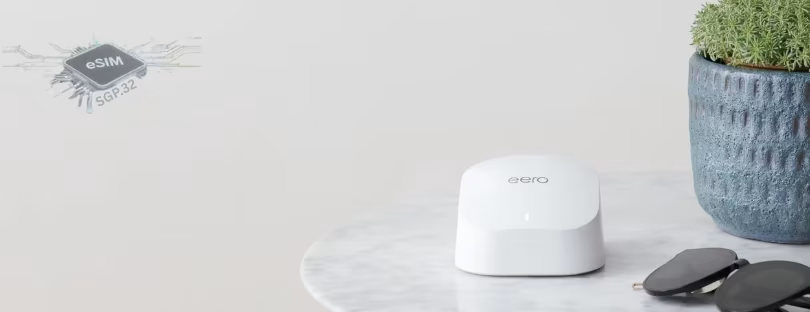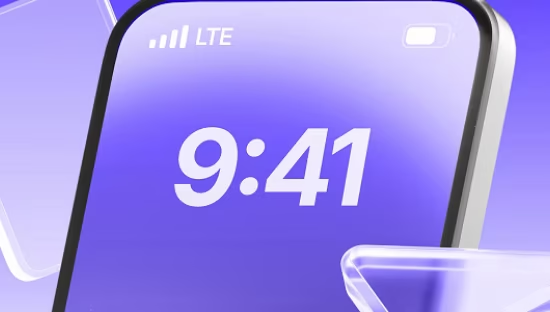
G+D and eero bring SGP.32 eSIM to connected homes
The world of connectivity is changing fast. For years, eSIM technology has been talked about as the future of smartphones, travel, and IoT — a way to replace clunky plastic SIM cards with a digital alternative that offers flexibility, automation, and scale. Yet despite the hype, most real-world use cases have been limited to mobile devices, leaving the broader connected home and IoT ecosystem lagging behind.
That’s why the latest move from Giesecke+Devrient (G+D) and eero, an Amazon company, is worth paying attention to. The Munich-based SecurityTech giant announced that its new SGP.32 eSIM standard has been integrated into eero Signal, a device designed to provide a dedicated cellular backup for eero Wi-Fi networks.
This is not just another IoT gadget. It’s one of the first commercial rollouts of SGP.32, a next-generation eSIM standard that promises to simplify device manufacturing, streamline carrier integration, and unlock new consumer experiences. For an industry still wrestling with SKU sprawl, fragmented connectivity options, and clumsy onboarding, this feels like a significant milestone.
Why this matters for IoT and connected homes
IoT has long struggled with complexity: fragmented SKUs, clunky carrier onboarding, and rigid go-to-market models that rarely scale. With SGP.32 embedded in eero Signal, device makers can now rely on a single SKU while customers enjoy automatic network activation and seamless carrier switching—capabilities once reserved for smartphones.
eero Signal adds another layer by pairing this dynamic eSIM with eero’s trusted Wi-Fi mesh. The result? A cellular backup for home and business networks that ensures “connectivity that just works” when broadband falters.
Driving 5G RedCap and eSIM adoption
The collaboration isn’t just about solving Wi-Fi outages. By aligning SGP.32 with 5G RedCap, G+D and eero are nudging carriers to accelerate support for these next-gen standards. With multiple Tier 1 operators already lined up, this signals more than a product launch—it’s the start of a larger market shift toward smarter, more resilient connectivity.
“The adoption of G+D’s SGP.32 eSIM technology in eero Signal represents a major step forward for secure, flexible connectivity across the IoT ecosystem,” said Philipp Schulte, CEO of G+D Mobile Security.
“By enabling dynamic connectivity management and eliminating the need for physical SIM handling, this collaboration sets a new global standard for how connected devices communicate.”
What it means for device makers and users
For OEMs, SGP.32 cuts integration costs and shortens time-to-market. For consumers, it means no more fiddling with SIM cards, better service continuity, and easier carrier switching.
“At eero, our customers have depended on us for reliable connectivity for more than a decade. We understand how disruptive internet outages can be,” said Gabe Kassel, Head of Product at eero.
“That’s why we introduced eero Signal to provide backup connectivity during an internet outage. Thanks to our collaboration with G+D on SGP.32, eero devices can seamlessly load additional carrier profiles over an existing internet connection without preexisting cellular connectivity, allowing easy and fast switching between carriers. We can’t wait for customers to try eero Signal.”
The bigger picture: who else is moving in?
G+D and eero’s partnership puts them in direct conversation with other heavyweights reshaping the IoT and connectivity landscape. Qualcomm is pushing hard on integrated 5G RedCap modems for IoT, while Thales continues to dominate with its IoT eSIM and subscription management services. Meanwhile, Apple’s eSIM-only iPhone models (starting with the U.S. version of the iPhone 14) have already set consumer expectations for a SIM-free future.
Industry analysts at Counterpoint Research note that global eSIM adoption is expected to cover 70% of all connected consumer devices by 2030, with IoT driving a large share of that growth. In this context, eero’s decision to debut eero Signal with Tier 1 carriers in the U.S. in 2026 feels less like an experiment and more like an inevitability.
Conclusion
What makes this launch stand out is timing. While others have talked about the potential of SGP.32, G+D and eero are putting it into consumers’ hands first—and in a sector (home connectivity) where reliability is non-negotiable. Compared to rivals like Thales and Qualcomm, G+D’s strength lies in execution: it’s turning standards into usable products, fast.
As carriers warm to SGP.32 and 5G RedCap, we’re likely to see connected homes evolve into fully dynamic networks—where switching carriers or scaling IoT services happens invisibly in the background. For consumers, it means more reliability. For the industry, it marks the beginning of a SIM-less IoT era, one where connectivity is no longer an obstacle but an invisible enabler.











